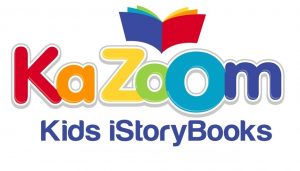Digital Publishing is Beneficial for Children
Felicia Gullotta // Blog Writer

Though living in 2016, an age where technology is easily accessible and widely embraced, there are still backlash against digital publishing. There is a clinging on to traditional print publishing and digital publishing seems to be underutilized, often being a mere translation of printed text onto an electronic screen rather than incorporating interactive features that can enhance the story. There seems to especially be skepticism around digital publishing when children are the intended audience. Now, this article isn’t a denunciation of traditional publishing; rather, this article is to show there can be a harmonious relationship between traditional and digital publishing that can be extremely beneficial to children.
Many strides are being made in digital content for children that is bringing more diversity into the publishing world. As far as we’ve grown as a nation in bringing diversity into the public sphere, there is still detrimental inequality. In 2014 only 5 percent of children’s literature included children of color, which is completely disheartening when you realize that the public school system serves 40% black and Latino students. The Latin-American, and African-American communities of America are being underrepresented and underserved in children’s literature.
To combat such a stark divide in the diversity of children’s literature compared to the diversity of cultures in America,KaZoom Digital Publishing started to make waves. KaZoom was started by an African-American woman, Donna Beasley. Beasley wanted to create a space where stories were being written with African-American and Latino characters and written by African-American and Latino authors, which is why the successful company then launched KaZoom Kids iStory Books. The stories “engage a child with read-along audio, sound, music, touch and animation” while also touching on “multiculturally sensitive issues like black hair and single parenting.” It’s wonderful to have these stories created and loved because every child should experience books and stories that relate to their lives. It’s time publishers stop trying to force-feed one specific type of story as the one and only universal story. In the words of Beasley “every child should see themselves and their community in a book. Our books help children grow up proud.”
Along with helping to create more diverse literature for children, digital content for children can be especially helpful for children with a reading disability. Recent studies, like “Benefits and Pitfalls of Multimedia and Interactive Features in Technology-Enhanced Storybooks” by Sofia Takacs, Elise Swart, and Adrianna Bus show that some interactive material has the potential to help these children more readily comprehend the story and learn.
The benefits of interactive elements in digital content come from how much the element correlated to what’s literally going on in the story. For instance, say the text reads “The dog ran up the hill” and there is an animation of a dog running up a hill versus the same text and a pop-up memory game. In the first scenario the connection is immediate and explicit. The interactive element is backing up what is happening in the story and therefore gives a visual connection to the text. These kind of directly related elements help children improve their comprehension of the story.
However, in the second scenario, we see an example of when an interactive element can be distracting. Other elements like this pop-up, such as puzzles or dictionary function, actually become distractions. For children with a reading disability these distractions become even worse. In the end, these studies are showing that there can be a positive effect of interactive material in digital children’s stories, but these elements must correlate and support the story. Anything extraneous is merely distracting.
Overall there is nothing about digital children’s publishing that makes it as bad as or as good as some people try to make it out to be. While it does face its shortcomings as potentially distracting, digital publishing also serves a greater, more positive role. It has been an avenue for increasing diversity in children’s literature as well as offering a new way of increasing children’s story comprehension.
